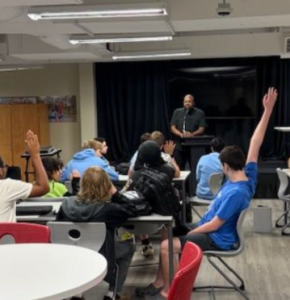
Helping Students Use AI Responsibly at The John Crosland School
By Rich Bowman, Manager of Information Technology
 At The John Crosland School, we love technology—but we also know it comes with some serious responsibilities, especially when it comes to artificial intelligence (AI). Generative AI is rapidly changing the way we interact with technology. Tools like ChatGPT, Google Gemini, and other AI systems can create everything from essays and artwork to music and code—all with just a few prompts.
At The John Crosland School, we love technology—but we also know it comes with some serious responsibilities, especially when it comes to artificial intelligence (AI). Generative AI is rapidly changing the way we interact with technology. Tools like ChatGPT, Google Gemini, and other AI systems can create everything from essays and artwork to music and code—all with just a few prompts.
While these innovations have opened up exciting possibilities for creativity and learning, they also bring new challenges. For students, the temptation to use AI as a shortcut for assignments or projects is real. As AI becomes more accessible, it’s important for us to guide our students on how to use these tools ethically and responsibly, ensuring they enhance their learning rather than replace it.
AI can be helpful, but it’s no substitute for doing your own work. At The John Crosland School, we teach students to think critically about AI. It’s a tool to help them learn—not an easy way out. We make sure they understand when AI is okay to use, and when it’s time to rely on their own ideas. We consider our conversations with students to be our primary tool in curtailing AI abuse. Rather than relying primarily on digital tools to detect AI submissions, (which we do employ) we believe that helping our students to see the value in their own thoughts is the best way forward.

AI isn’t going anywhere. In fact, it’s only going to become more integrated into our daily lives, from how we work to how we solve complex problems. What we’re seeing now is just the beginning, with AI playing a central role in fields like medicine, engineering, education, and even creative industries. As these tools continue to evolve, the ability to use them responsibly and creatively will be essential. This is why it’s so important that we teach our students not just to be safe in their use of AI, but to understand it and harness its potential for innovation.
The future of AI will require new kinds of literacy—where students not only understand how AI works but can also think critically about it, ask the right questions, and use it as a tool for growth and creativity. As AI continues to shape the world around us, our students need to be more than passive consumers of technology. They must be active participants, equipped with the knowledge and skills to use AI in ways that are ethical, thoughtful, and innovative. This will not only protect their academic integrity but also prepare them for a world where the line between human and machine-made content is often blurred.
At The John Crosland School, we’re committed to helping our students navigate this new world. After all, the future is being shaped by the AI-savvy minds of today—and we’re excited to help our students be part of that transformation.



Sorry, the comment form is closed at this time.